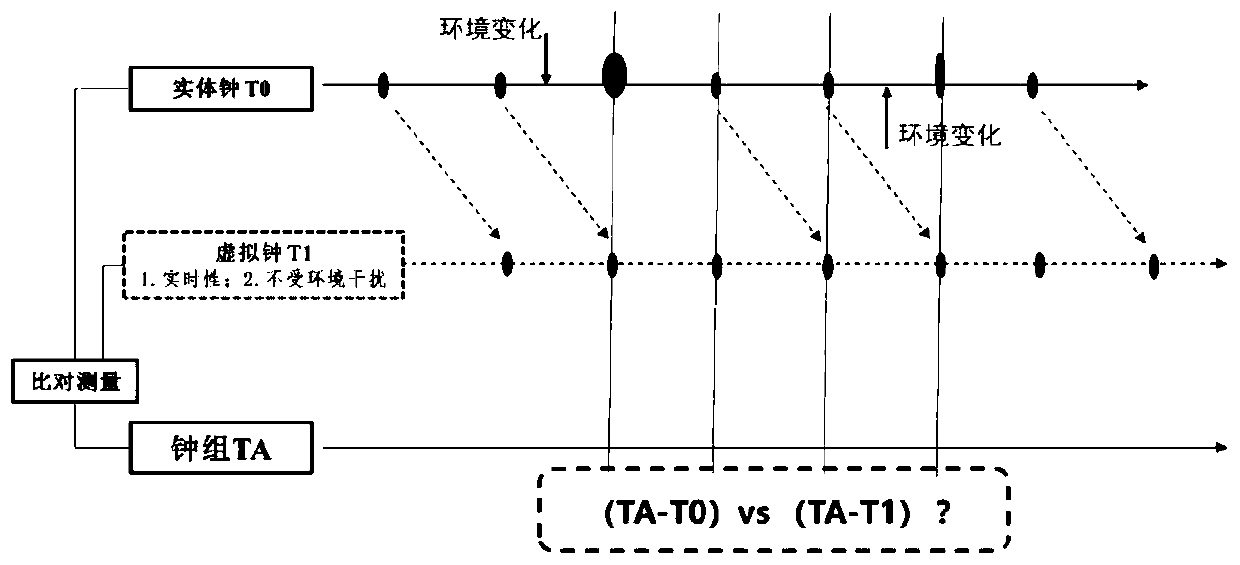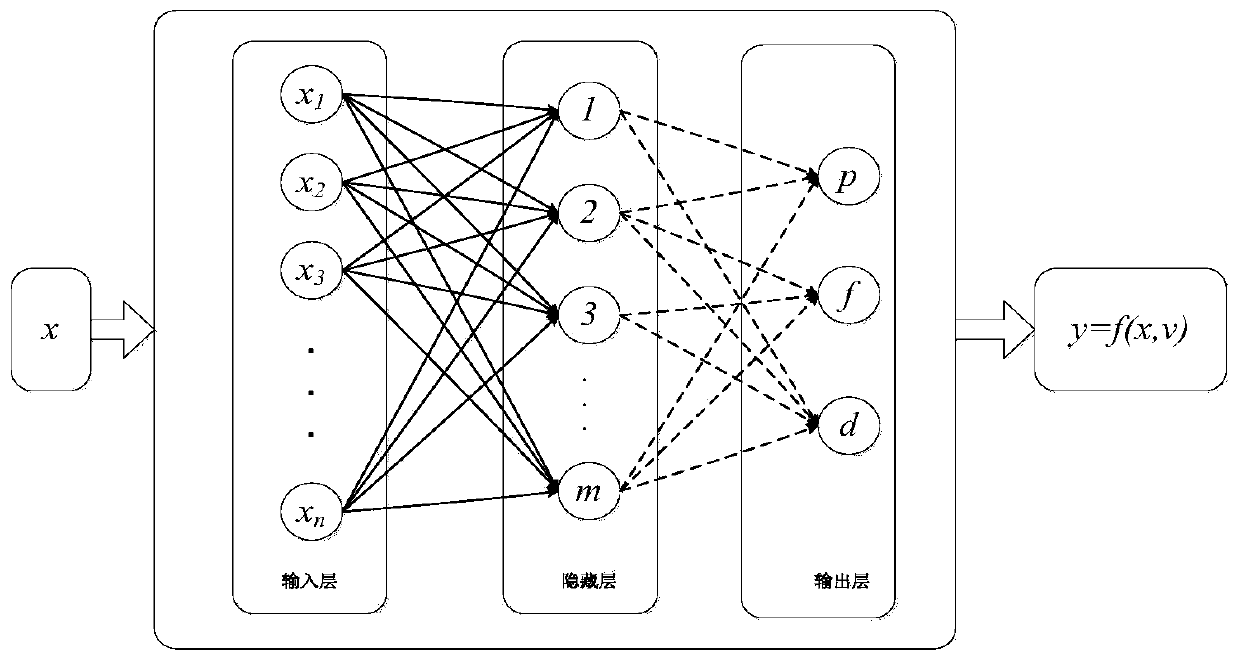Virtual atomic clock system for monitoring entity atomic clock and working method
A working method and technology for atomic clocks, applied in the field of atomic clocks, can solve problems such as accurately evaluating the performance of atomic clocks, and achieve the effect of meeting real-time requirements
- Summary
- Abstract
- Description
- Claims
- Application Information
AI Technical Summary
Problems solved by technology
Method used
Image
Examples
Embodiment 1
[0067] Example 1: Random tracking strategy predicts atomic clock behavior:
[0068] Embodiment 1 includes a group of predictors, wherein each predictor works in an independent subspace, and the weighted average of all predictors for future predictions is used as the final prediction result, which consists of the following parts:
[0069] (1) Historical data:
[0070] Let X be the measured value vector of atomic clock phase or frequency data, and T be the time interval between each data point.
[0071] X=(x1x2...xn) (1)
[0072] Among them, X represents the historical data sample, that is, the phase difference or frequency difference measured by an atomic clock relative to the reference clock or time scale; xt represents the phase difference or frequency difference at time t, and the vector X is used as the historical data measured by the atomic clock for prediction Future phase or frequency changes of atomic clocks.
[0073] (2) Random grouping
[0074] A random grouping s...
Embodiment 2
[0087] Example 2: LSTM neural network predicts atomic clock behavior:
[0088] In this embodiment 2, a long-short-range memory neural network unit is designed to predict the output frequency information of the atomic clock at the preset time by learning the historical data of the atomic clock. The experimental results compared with the traditional Kalman filter prediction method are as follows Figure 5-Figure 6 shown.
[0089] The electrical components appearing in this article are all connected with the external main controller and 220V mains electricity, and the main controller can be a conventional known device that plays a control such as a computer.
[0090] Compared with the prior art, the present invention proposes to construct a virtualized atomic clock, whose performance is close to the measured one, and use it as a reference to evaluate the performance of the physical atomic clock and monitor the abnormal behavior of the physical atomic clock. The virtual atomic clo...
PUM
 Login to view more
Login to view more Abstract
Description
Claims
Application Information
 Login to view more
Login to view more - R&D Engineer
- R&D Manager
- IP Professional
- Industry Leading Data Capabilities
- Powerful AI technology
- Patent DNA Extraction
Browse by: Latest US Patents, China's latest patents, Technical Efficacy Thesaurus, Application Domain, Technology Topic.
© 2024 PatSnap. All rights reserved.Legal|Privacy policy|Modern Slavery Act Transparency Statement|Sitemap



